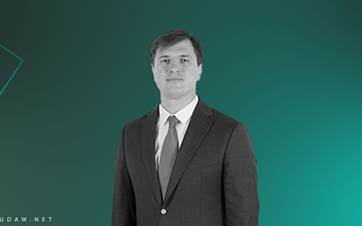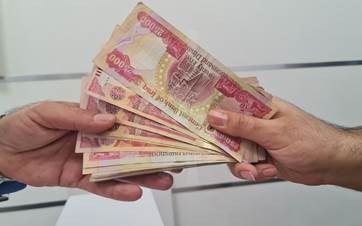
The aftermath of an Islamic State (ISIS) attack in Iran's southeastern Iran’s Kerman province on January 4, 2024. Photo: AP
On January 3, over 80 people participating in a commemorative ceremony for slain Iranian military commander Qassem Soleimani were killed in the twin attacks carried out by the Islamic State Khorasan Province (ISKP) on the fourth anniversary of his assassination at the hands of the United States. This was recorded as the one of the bloodiest terror attacks in Iran’s history, sending shockwaves across the country and sparking several security debates, focusing mainly on the attack's foreign support dimension, with Iranian officials claiming that the US and Israel were behind the attacks. However, the US announcement that it had shared intelligence with Iran on the possibility of an Islamic State (ISIS) attack in the country prior to the attack, and the increase in terrorist attacks in the country in recent years highlighted Iran’s neglect as one of the main the failure to prevent this attack, underlining the need to examine the consequences of Iran's current counter-terrorism strategy.
In the context of Iran's counter-terrorism strategy, the first dynamic that emerges is the adoption of a holistic approach consisting in the application of the same strategy to counter threats emerging from a variety of distinct terrorist groups with different ideologies and political goals. There are currently numerous groups struggling against the Iranian regime, all of which are categorized by the latter as “counter-revolutionary groups.” In the legal context and in political discourse, the terms "counter-revolutionary group" and "terrorist organization" can be used interchangeably. Despite their difference in the factors motivating these groups’ opposition to the regime, whether ethno-nationalist, ethno-sectarian, jihadist or other, are dealt with in the same way by Iran. This often leads to the lack of a clear analysis of the various socio-cultural, socio-economic, and political conditions that result in the formation of said groups. While some of these groups claim to be fighting for rights related to ethnic identity, others claim to mobilize in response to issues such as income inequality, access to social services, education or the struggle for freedom of religion. Iran’s failure to properly analyze these different claims and motivations results in the perpetuation of the causes that exacerbate the terrorist threat in the country.
In addition to this, it is important to note that Iran's counterterrorism strategy is predominantly reactionary and deterrence-based, therefore counter-terrorism operations are typically launched in response to terrorist acts, and often involve the use of military force with a focus on retaliation. Currently, Iran's approach is based on deterrence through military force, following the principle of action-reaction. For instance, Iran may target the Kurdistan Region of Iraq in response to the actions of armed Kurdish groups, or the Iran-Pakistan border regions in response to actions of armed Baluch groups. Similarly, certain regions in Syria and Iraq may be targeted by Iran with ballistic missiles or drones in response to attacks carried out by Arab armed groups such as the Arab Struggle Movement for the Liberation of Ahwaz (ASMLA) and National Liberation Movement of Ahwaz (NLMA), and ISIS. However, these operations do not produce long-term results because they do not address the social, economic or cultural issues at the root of terrorism. In addition to this, these operations damage these groups' logistics capabilities only temporarily.
Iran’s current counter-terrorism strategy neglects prevention strategies aimed at keeping individuals from joining the terrorist groups. This situation reflects a lack of understanding of the root causes of terrorism. In Iran, economic problems like poverty, unemployment and access to education and social services, as well as socio-cultural issues such as discrimination, pressure on ethnic groups, frustration of different religious or sectarian groups and political opposition to the Iranian regime’s authoritarian character are closely related to the causes of political violence. Sistan-Baluchestan, Kurdistan and Khuzestan provinces are regions where these tensions are particularly apparent. Despite the role played by these issues in exacerbating the threat of terrorism in Iran, the country’s current counter-terrorism strategy overlooks these elements, relying solely on a deterrence-based approach carried out through military actions and legal sanctions is likely to only produce short-term successes. In the middle and long term, however, this approach may actually favor terrorism and the proliferation of terrorist organizations.
Iran erroneously considers foreign support, a factor which can in certain circumstances facilitate terrorism, to be its root cause. Attributing terrorism solely to foreign support however overlooks the underlying conditions giving rise to it. Overestimation of foreign support to terrorism also serves the regime’s "foreign enemies'' narrative, which Tehran has been fueling since the 1979 revolution, and which consists in the portrayal of the US, Israel and Saudi Arabia as " foreign enemies trying to overthrow the Iranian regime and destroy Iran. This has been repeatedly used to mobilize public support for the regime. Since 2014, Iran has adopted a strategy consisting in fighting terrorism across borders, which has actually led to counter-productive results. Iran has presented itself as a pioneer in the fight against ISIS in the region, particularly in Iraq, by organizing Iranian-backed militia groups in Iraq and Syria. While these groups were initially formed to fight ISIS in Syria and Iraq, they have since become oppressive towards local populations and pose a threat to regional security. This has caused significant discontent among locals, leading them to adopt Salafist approaches as a reactive measure against Iran. Therefore, Iran's strategy of 'fighting terrorism across borders' has created a mechanism that generates opposition and threats against itself regionally and internally.
This is exemplified by the fact that Afghanistan and Pakistan, which Iran considered as the the recruitment centers of the Iranian-backed militias known as the Zainabioun and Fatemiyoun brigades, have now become recruitment centers of the ISKP. While Iran has been organizing the Zainabioun and Fatemiyoun brigades to fight on behalf of Iran in Syria, these groups have also started to gain their own power and influence in Afghanistan and Pakistan. Iran's recruitment activities in Afghanistan and Pakistan have increased social tension and the Shia-Sunni divide in these countries. In addition, anti-Iranian sentiment has also risen in these regions. This situation has led to the strengthening of anti-Iranian extremist groups. As a result, the foundations of the current ISKP threat to Iran which originates from Afghanistan and Pakistan, have been established. Moreover, Iran's activities in Syria in the name of fighting terrorism have not only affected organizations operating outside the country, but also those operating within the country. Groups such as Ansar al Furqan and Jaish al Adl in Sistan-Baluchistan have taken an ideological turn towards Salafism as a result of Iran's activities against Sunni groups in Syria, to. As a result these groups have also increased their attacks in Iran after 2014.
Finally, domestic inter-institutional rivalry can also be considered as one of the main factors that influence Iran's counterterrorism strategy. In Iran, counter-terrorism processes are carried out by the Iranian Revolutionary Guard Corps (IRGC), Ground Forces, the IRGC Intelligence Unit, the Basij Organisation, and the Ministry of Intelligence. As reflected by the example of the ISIS attack in Tehran in 2017, terrorist attack on a military parade in Ahwaz in 2018, and assassination of Mohsen Fakhrizade in 2020, the competition between the IRGC and the Ministry of Intelligence can affect the success of the counterterrorism strategy and, in some cases, lead to the failure to prevent terrorist acts.
Following each of these incidents, the intelligence ministry claimed that it had shared the necessary warnings and intelligence with the IRGC intelligence unit prior to the incidents, claiming that responsibility for the failure lied with the IRGC who neglected the information. On the other hand, the IRGC claimed that the intelligence ministry prevented them from carrying out its intelligence, interfering with its jurisdiction. Overall, this situation reflects serious institutional rivalry which leads to coordination issues between the two institutions, which in turn can lead to the failure to prevent terrorist attacks.
Cagatay Balci, PhD, is an independent researcher and analyst focusing on terrorism studies, non-state armed actors, and strategic communication.
The views expressed in this article are those of the author and do not necessarily reflect the position of Rudaw.







Comments
Rudaw moderates all comments submitted on our website. We welcome comments which are relevant to the article and encourage further discussion about the issues that matter to you. We also welcome constructive criticism about Rudaw.
To be approved for publication, however, your comments must meet our community guidelines.
We will not tolerate the following: profanity, threats, personal attacks, vulgarity, abuse (such as sexism, racism, homophobia or xenophobia), or commercial or personal promotion.
Comments that do not meet our guidelines will be rejected. Comments are not edited – they are either approved or rejected.
Post a comment